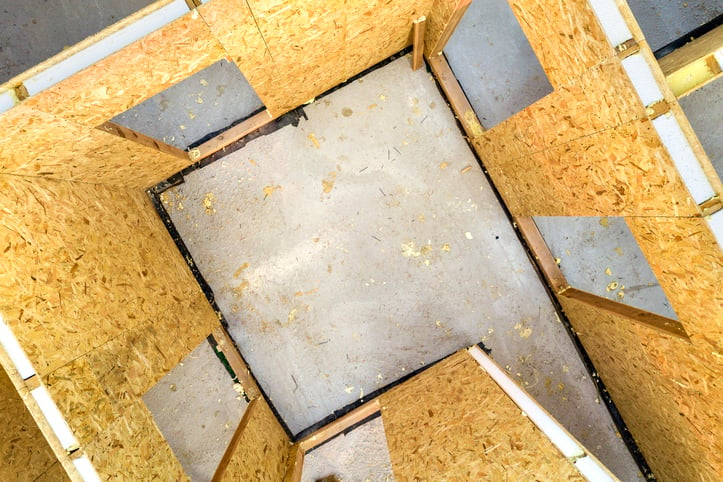
In meeting with future homeowners, I’ve found myself fielding an increasing number of inquiries about structural insulated panels (SIPs).
While SIPs aren’t part of Barden Building Products’ panelized construction method, it’s worth spending some time addressing the questions I’m hearing.
Here are the top seven questions that keep coming up in conversation:
1. Q: What Are Structural Insulated Panels?
A: Structural insulated panels are constructed by sandwiching a thick layer of insulation foam between two large sheets of oriented strand board (a very common building material). They can be used in both the interior and exterior walls of a home.
2. Q: What Are the Benefits of SIPs?
A: SIP panels are incredibly efficient for thermal insulation and providing an excellent vapor barrier. They can also boost construction efficiency similar to a panelized system.
3. Q: What Does Barden Make?
A: Barden does not make custom home components -- that's what our manufacturing division, North American Truss, does for the Fast Track Framing System that comprises all Barden homes.
Fast Track Framing System includes wall panes, roof & floor trusses, and pre-engineered decking. Made in North American Truss’s factory, all building products are precision-engineered under strict controls.
All wall panels can be sheathed and insulated with anything your local building department will allow.
4. Q: Why Doesn’t Barden Build SIP Panels?
A: SIP construction involves a highly specialized manufacturing process, and we haven’t invested in the technology yet. For the time being, SIPs are not part of our catalog of customization options for future homeowners.
5. Q: Are SIP Panels Better Than Traditional Panels?
A: In a lot of ways, probably.
But there’s a good reason you don’t see these structures very often.
Despite some misleading articles I’ve found, I can tell you without hesitation that SIP panels cost a lot in Western New York. Their inclusion in a custom floor plan involves specialty contractors, specialty manufacturing, specialty knowledge, specialty equipment -- which adds to a construction budget significantly.
On a personal note, I’m all for saving the planet with green solutions. However, integrating environmentally friendly materials into a project shouldn’t involve building walls out of polystyrene foam. How can you save the world by dumping more chemicals into it?
6. Q: Why Would Anyone Use SIPs for Their Home?
A: As I mentioned earlier, SIPs provide an excellent vapor barrier and can boost construction efficiency. If you want the absolute last word in energy efficient building and have little budget restriction, I can’t think of a reason not to.
I’m also sure that in other areas where SIPs are more common, many of the associated costs are not as high as they are in Western New York. For the rest of us, standard wood frame construction reigns king, and will for some time.
7. Q: Is There a Cheaper Alternative?
A: A Barden panel with Zip-R sheathing and blown-in insulation is a good place to start.
It would still be very pricey vs. industry-standard sheathing and insulation, but would provide many of the performance advantages of SIPs without specialty contractors.
Structural Insulated Panels: The Bottom Line
Research enough and you’ll find tons of building methods (including ours) that all claim to be the best and will save you time and money.
While SIP panels do have some advantages in construction, their cost to include in a home’s design outweighs their benefits -- especially in our region.
The reality is that only a few of these building systems are proven and truly accessible in Western New York. Barden Building Products’ panelized construction method is one of them and has stood the test of time.
Have questions about building the rest of your Barden custom home?
Download our Ultimate Homeowner's Toolkit:


